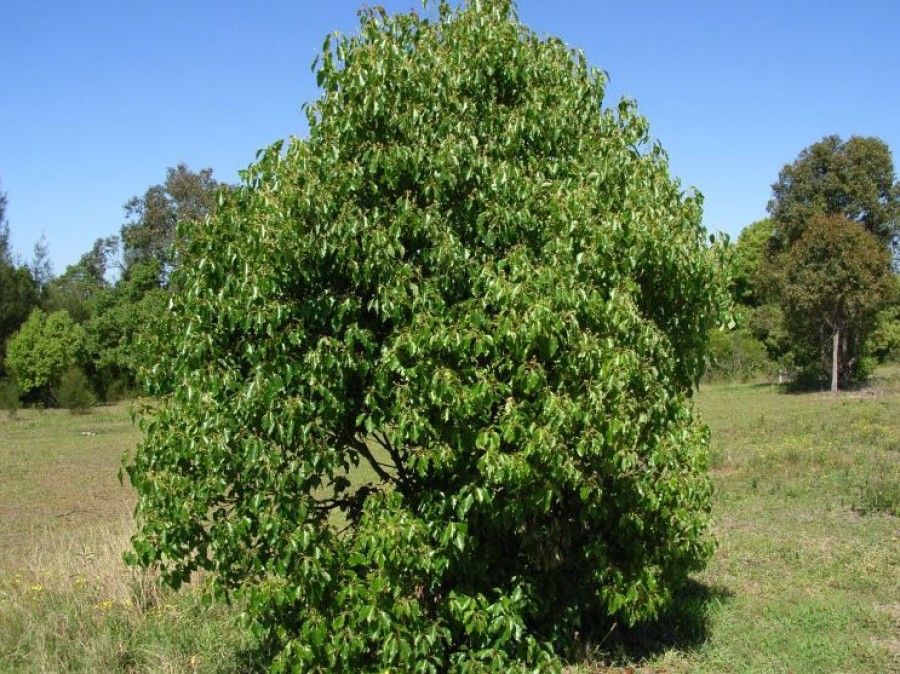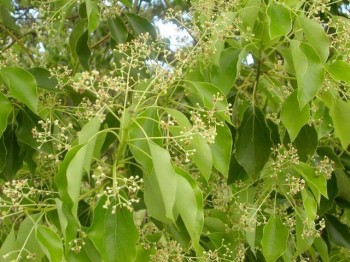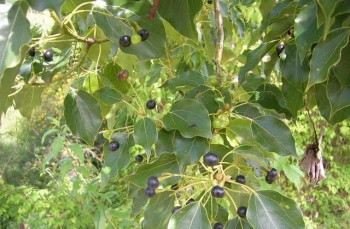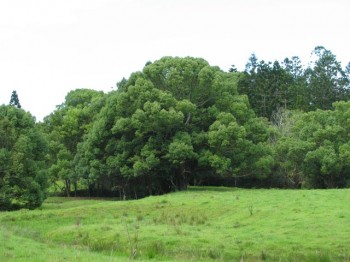Weed Profile - Camphor Laurel (Cinnamomum camphora)
How does this weed affect you?
Camphor laurel has the ability to adapt to the disturbed environment, it has prolific seed production and rapid growth rate as well as a lack of serious predators or diseases, it also has many specific attributes which enhance its weed status.
- It has a tendency to form single species communities and exclude most other tree species, including desirable native vegetation.
- It has a competitive advantage over native vegetation because it establishes easily.
- Birds and other fauna readily eat the fruit and disperse the seeds.
- It has a very dense, shallow root system which, when accompanied by the shading provided by the canopy, suppresses the regeneration of native seedlings.
- It can destabilise stream banks due to undercutting by the shallow root system and the general lack of ground cover species around the trees to hold the soil in place.
- Mature camphor laurel trees are large and therefore difficult and expensive to remove.
- Camphor laurel trees are long-lived with some trees being over 100 years old and reports of some up to 500 years old in their native habitat.
- Camphor laurel trees regenerate easily after lopping.
- Invasion of agricultural lands by camphor laurel can cause significant impacts on productivity and the costs of control can reduce the viability of some agricultural pursuits.
On the north and mid north coast, camphor laurel invades large areas of land and inhibits potential land use in the same way as lantana, groundsel bush, crofton weed and privet. It is especially troublesome on sloping, rocky land not readily accessible to machinery or grazing animals, and on better land not intensively utilised. The contraction of dairying and banana farming since the 1960s has resulted in large areas becoming infested with camphor laurel.
What does it look like?
Camphor laurel is an evergreen tree which grows up to 20 m in height. It has a large, spreading canopy and a short, stout bole or trunk up to 1.5 m in diameter.
The bark is greyish brown and has a rough texture. The leaves are alternate, 5–10 cm long and 2.5–5 cm wide and are a glossy green.
Flowers are minute, white and borne on panicles or heads near the ends of branches. They have a distinctive odour and attract large numbers of small flies.
The fruit is a round berry 8 mm in diameter. The berries are green when immature and ripen to black. They contain a single seed about 5 mm in diameter.
In dense stands, second generation trees are more upright with long, slender boles and small canopies. Young trees tend to form multiple stems after fire or other injury.
Camphor laurel is easily identified by the pungent camphor odour arising from crushed leaves or exposed wood. In its native habitat there are three distinct types based on the major oil components of either camphor, cineole or linalool. The camphor form is most common in Australia.
Control
Landowners are encouraged to control isolated and
scattered camphor laurel trees, particularly if they are small, as soon as possible. Local councils have active control programs for roadsides and reserves. These programs focus on working from the cleaner, lightly infested areas to the more heavily infested ‘core areas’. In core areas, gradual, long-term management programs are being put in place.
A number of techniques are available to control camphor laurel. The technique used will depend on the situation, landscape, number of trees to control and resources available. It is important to plan your control program and take a long-term approach including follow-up treatments, control of other weed species, and planting of replacement species.
Management should aim to increase competition, which will prevent invasion by camphor laurel.
Read more on NSW WeedWise




